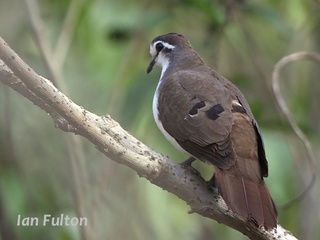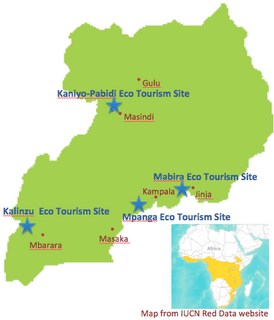#16 Tambourine dove
Manage episode 282176378 series 1070014
Content provided by Kanako Tanaka. All podcast content including episodes, graphics, and podcast descriptions are uploaded and provided directly by Kanako Tanaka or their podcast platform partner. If you believe someone is using your copyrighted work without your permission, you can follow the process outlined here https://player.fm/legal.
The male bird which can raise his chicks with his milk!
>>Listen to the story about Tanbourine dove
Cannot listen? Download the sound file from here!

Tanbourine dove
(Turtur tympanistria)
Photo by Ian Fulton
Enjoy more Ian's photo from here
Where can I find
Tambourine dove in Uganda?
This bird can be found in forest all over Uganda.

Press "read more" for the full Script of the program
#17 Tambourine Dove
Turtur tympanistria
NFA bird Podcast: I am Johnnie Kamugisha. The bird for today is a Tambourine Dove.
This is a small plump bird, 22 cm long, from the beak to the tail.
This is a widespread resident breeding bird in woodlands and other thick vegetation (forests).
It is a shy species that is usually seen when flushed whilst feeding on the forest floor.
Dark brown above and white underneath, which is very distinctive in males, you will see the white under the bird, when it flies off.
Distinctive of doves, they tend to builds a frail nest.
Both male and female incubate the eggs although it is the female that mainly does it.
The incubation takes 13 days and it takes 2 weeks for the young to fledge.
It is usually solitary, but is sometimes seen in family groups
It can be found in almost if not all forests in Uganda.
And it is the bird you will hear the calling almost the whole day, which probablly can be used as a clock because some of the birds tend to call right at the end of the hour. For example, Turacos and the Tambourine doves are more or less the same.
The bird for today is a Tambourine Dove and am Johnnie Kamugisha.
…
continue reading
>>Listen to the story about Tanbourine dove
Cannot listen? Download the sound file from here!
このブラウザでは再生できません。
再生できない場合、ダウンロードは🎵こちら
再生できない場合、ダウンロードは🎵こちら

Tanbourine dove
(Turtur tympanistria)
Photo by Ian Fulton
Enjoy more Ian's photo from here
Where can I find
Tambourine dove in Uganda?
This bird can be found in forest all over Uganda.

Press "read more" for the full Script of the program
#17 Tambourine Dove
Turtur tympanistria
NFA bird Podcast: I am Johnnie Kamugisha. The bird for today is a Tambourine Dove.
This is a small plump bird, 22 cm long, from the beak to the tail.
This is a widespread resident breeding bird in woodlands and other thick vegetation (forests).
It is a shy species that is usually seen when flushed whilst feeding on the forest floor.
Dark brown above and white underneath, which is very distinctive in males, you will see the white under the bird, when it flies off.
Distinctive of doves, they tend to builds a frail nest.
Both male and female incubate the eggs although it is the female that mainly does it.
The incubation takes 13 days and it takes 2 weeks for the young to fledge.
It is usually solitary, but is sometimes seen in family groups
It can be found in almost if not all forests in Uganda.
And it is the bird you will hear the calling almost the whole day, which probablly can be used as a clock because some of the birds tend to call right at the end of the hour. For example, Turacos and the Tambourine doves are more or less the same.
The bird for today is a Tambourine Dove and am Johnnie Kamugisha.
15 episodes




